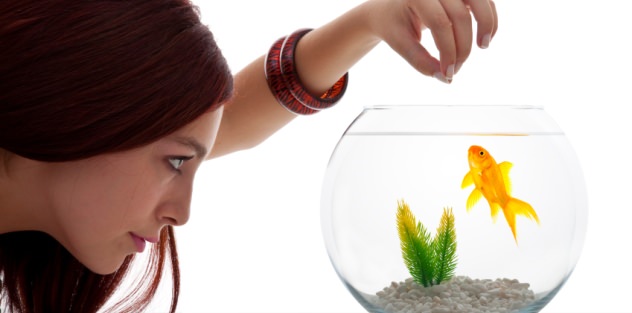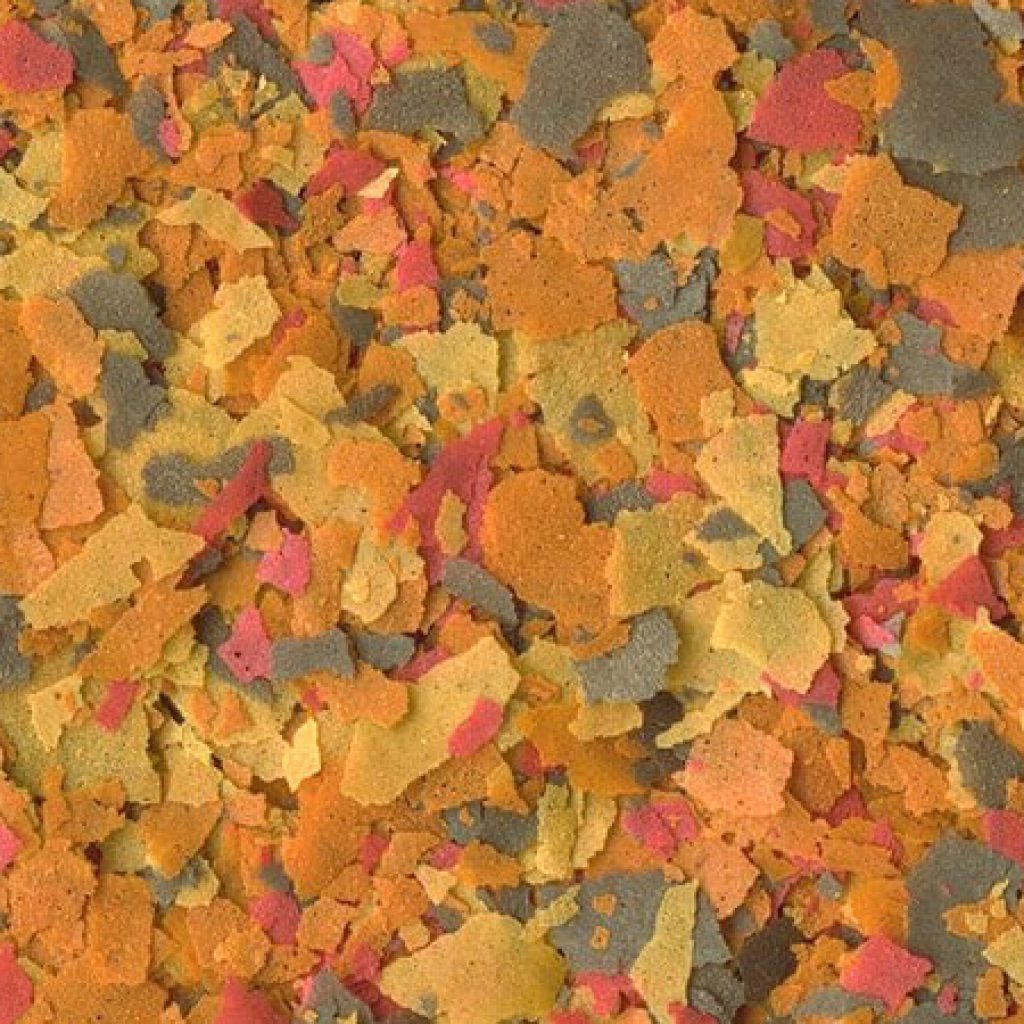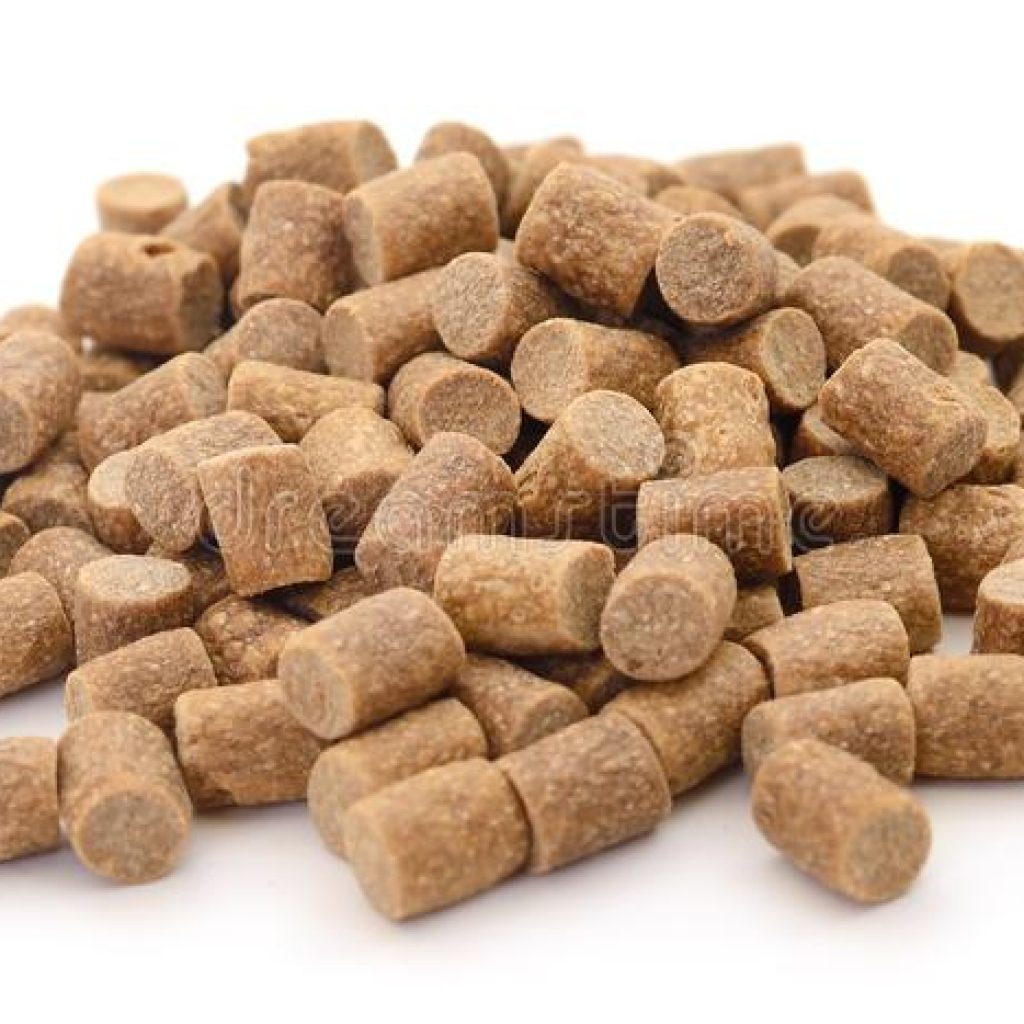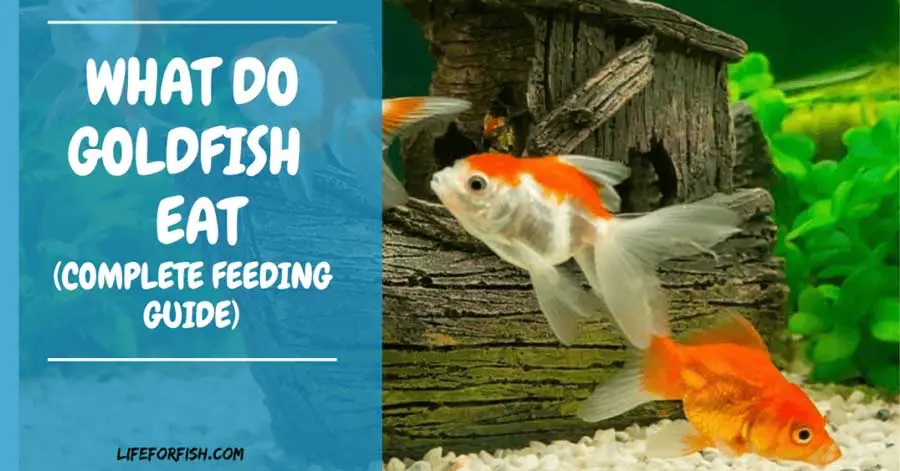Considering how stunning it is, we wouldn’t be very surprised if you qualify the goldfish as your most favorite one in the tank.
If you have owned a goldfish for quite some while now, you should be acquainted with the foods that you can feed it; but, the question is, can you confirm that whatever you are feeding it is fulfilling its nutritional requisites?
If not, continue reading this article as you will find it answering all your major questions.
Also, for people who have recently started petting a goldfish, here’s your chance to start treading on the right path and let your glamorous friend live a healthy life.
The importance of correct diet and nutrition
Unlike other fishes, one of the first things that must be taken into account is the diet you will be providing it with.
Before moving on to anything else, let us clarify that goldfishes hail from distinct groups and each of them has dissimilar food requirements; however, there happen to be a few similarities in all of them because they principally originate from carp in Asia.
Regardless of the type, you have in possession, the diet of a goldfish will be more or less comparable because they are omnivores and there is a wide palette of options that you can choose from to curate dietetic nourishment for them.
But, once you have a list of foods that can be fed at hand, you will have to know their portions and the suitable time to serve the start of your tank.
All of this care boils down to one obvious fact and that is, with the appropriate supply of nutrition and attentive care, a goldfish can live for more years than you would commonly expect it to.
When a goldfish is removed from his natural habitat, he tends to feel stressed and retorts by curtailing their food intake.
Hence, if you want to keep the fish healthy and feed them optimal quantities of food, try to make the interior of the aquarium look like their biological environment as finely as possible.
You can incorporate a few plants (preferably fast-growing species like hornwort) in there for them to chew on occasionally without letting the plant wither off.
Besides, introducing sources of algae in the fish tank is always desirable.
Speaking of the correct and diet and nutrition, you must prioritize proteins (small insects and worms) and fats for your goldfish because the former aids their growth and their servings can be altered as per needs.
Coming to fats, it is where goldfishes derive their energy from and should constitute 5-10% of their fare.
Although almost all foods comprise fat, there are clear distinctions in the amount contained in each of them; plants are the least effectual sources of fat whereas, fish food with fatty oils is the best.
What do goldfish eat in the wild?
Goldfish In The Wild
Like we have already mentioned that they are part of the ornamental carp, in their wild habitat they eat everything that is classified under the category of naturally-occurring carp food including insects, tadpoles and the like.
Owing to their scintillating exterior and small built, one would expect their diet to be something fancy but, in reality, it is not.
Other than this, they also turn to eat frogs and spawn and aquatic plants, smaller fish, algae and even other such small creatures from the water.
The explanation supporting goldfish’s choice of diet in the wild is that in the wild, the carps thrive in slow-moving freshwaters and river waters of Asia.
Therefore, they have a lot of plant life available in this water; some of them float along the stream of water and the others are loosely attached to the rocks and substrate.
More or less, these plants are the primary source of the goldfish’s food unless it is inclined towards devouring something else.
Generally speaking, the plant-based diet is very rich in fiber and nutritious as far as their digestive health is concerned; and for the rest of the essential components, they are found in the running water itself.
What should you feed your goldfish?
There is no such restriction about what a goldfish can be fed and what cannot be; meaning, you will be spared from worrying about finding proper foods to serve them.
If you explore a bit, you will see that the goldfish frequently resort to store-bought pellets and flakes that have been fashioned with the most favorable magnitude of nutrients in them.
The only point of difference between flakes and pellets is that flakes remain afloat on the surface of the water consequently making themselves more accessible for the fish and the pellets sink at the bottom of the tank right after you disperse them.
Nevertheless, if you are too fond of the idea of feeding your goldfish pellets and flakes all the time, you can fall back on live foods which are also an excellent supplier of protein.

Your dazzling pet is mostly leaned towards eating brine shrimp, ghost shrimp, daphnia and snails such as the freshwater variant of mystery snails.
But, if you think live foods will mess up your tank and make it unfavorable for the other fish, you can keep frozen foods in the aquarium to create a more convenient supply of protein.
For vegetables, you can simply browse through the stock you have in your kitchen and opt for some fresh fruits and green leafy veggies and before placing them in the tank, make sure you have torn them into minuscule pieces.
Another thing that should be kept in mind is that if the goldfish denies the food that it has been given to feed upon, it could conceivably be because the tank is dirty, they are conditioned to the diet you are furnishing them with or the temperature of the container is either too hot or cold.
Supplementary selections for their foods are squid, warms, bloodworms, algae wafers, homemade fish food, insects, mosquito larvae and insects.
Best types of goldfish food?
The truth that when you are out there procuring food for your goldfish, you will be flooded with infinite options is but, obvious.
But, the one that you finally select will be influenced by the age, size, and type of the fish and your budget.
Fundamentally, goldfish food can be segregated under three groupings namely live, fresh and dry foods and dry foods, in turn, are divided into gels, flakes, and pellets.
In the segment below we will be shedding more light on these variations so that you know which out of them fits well into your plan and constraint.
- Gels
Generally speaking, gels are the best that you can hand out to your goldfish; especially if you are keeping the eloquent one.
The majority of the keeps sway towards gel foods because they are moist and easy for the fishes to ingest and digest.
If you don’t but it from the market, you can soak your homemade fish food in water for a while until it forms a gooey texture but, over time, the water can retain all the crucial nutrients leaving the food very basic.
With gel foods that are sold commercially, this is not the picture; the gelatin is meant to hold the ingredients together and keep away the reservoir from polluting unnecessarily if the nibbles ate left unattended for long.
There’s also an extra way out; you can obtain the powdered version of the foods, mix them with water and refrigerate it for as long as you want.
2. Flakes

Flakes are the ultimate resolution for people who are very particular about the cleanliness of their fish tanks; flakes float on the water for a decent period and do not cloud the water after absorbing water from the surface.
If you try to over-feed the fish, it will leave pass by the extra flakes which, after a while, will break into bits and sink to the bottom ensuing the mess that you were trying so hard to avoid. (Moderation is always the key)
Nonetheless, flakes have their own share of issues; as because the goldfish tries to gulp it from the plane of the water itself, it can, on some occasion swallow too much air.
3. Pellets

The only drawback of pellets is that they sink too soon to the bottom of the tank and your fish might fail in finding them; but, they dissolve exceptionally slowly inferring that your pet will have adequate time to gobble their food.
There are also a few brands that sell the floating version of these pellets but, are incredibly erratic.
Remember that if your fish ever falls sick, he will look for foods that sink thereby, to be on the safer spectrum of things, always have a small jar of pellets in your stock.
Pellets, in particular, should be first soaked in water separately for some time and then offered to your fish because if not, munching the raw ones can induce a string of digestive issues.
How often should you feed your goldfish?
As per our understanding, you should feed your goldfish about two or three times a day.
If possible, notice their reactions and once you are indubitable about the fact that it has accustomed itself with the schedule, fix a routine.
After a few days, you will see that your munchkin is ready to indulge in his meal a few minutes ahead of the designated hour by frequenting near the top of the tank.
Consider the chunk of food that you are doling out to the fish; if you mistakenly happen to drop more than the ideal quantity, cut on the next serving and so on and so forth.
Similarly, if the goldfish is encountering digestive issues, stick to providing for only 2 meals a day. Additionally, you should not give to eat more than what can be eaten in 2-3 minutes.
Based on their feeding needs, the food should be adequate to be guzzled in a total of 6 to 7 minutes throughout the day.
When is the best time to feed your goldfish?
There is no strict rule governing the best time of the day when a goldfish can be fed; formulate an arrangement that matches your timetable to certify that your pet has enough food to eat and the hours aren’t too close or distant from one another.
Regardless of the time, you choose to serve them, consistency matters. Just like humans, fish too have their own clocks and it is imperative to abide by them when your goal is to keep them healthy and stretch their longevity.
Say, for example, you have a 9-5 job, you can feed the fish before you leave for work, feed them immediately after you return from office and the last serving can be followed up after four or five hours of the intermediate meal.
The reason why we are laying so much emphasis on a routine is that having one will soon make it a part of your daily habit and guarantee that you are not missing out on their feeding time or fallaciously serving them twice.
Frequently Asked Questions
After getting you familiarized with the innate nature of goldfish and their tendencies circumscribing their food and diet, it is now time to take you through a few frequently asked questions to clear all every speck of the doubt remains.
How long can a goldfish live without food?
This question is something that all of you must be interested in because not always is it possible to look after your pet and feed it from time to time; specifically when your away and your fish is left alone in its tank.
If you have chances, you can leave your fish in the care of a close friend or someone from your family rather than letting it be entirely on its own.
Normally, a goldfish can survive for as long as eight days to two weeks without food and would still be absolutely hale and hearty.
This implies, if there is no one to thoroughly look after your prized one, you can request your neighbor or friend to feed it once or twice in a week or in two weeks’ time.
Let’s not forget that there are shreds of evidence which claim affirm that a goldfish can make it without food for over 4 months; this happened in New York after the country was hit by an earthquake and the fish had no opportunity to rely on human assistance.
Why is my goldfish not eating?
Your goldfish might not eat because of the unclean water or disease. This is why it is vital to identify changes in their behavioral pattern and swimming.
Usually, a goldfish or any other fish in that matter swims sideways in an aquarium but, if you perceive that your domesticated companion has taken to move in a vertical direction, it can be indicative of bladder disease triggered due to overeating.
If not this, the other potential justification could be constipation. Here, you will discern the goldfish remaining close to the bottom of the tank and swimming through the same lines and scooting along.
To prevent the condition from deteriorating, do not give it any food for 2 days or only serve very tiny portions of boiled or cooked pees.
Does goldfish eat rice?
No, goldfish do not eat rice and they should never be furnished with any.
They offer no nutritional value of any kind and pose several health risks for the creature because under no circumstances are pure carbohydrate foods profitable for your fish.
Far from providing a fleck of nutrients and vitamins, rice is capable of making a goldfish vulnerable to grave illnesses. Fishes that are held captive should be propounded with a balanced diet.
But, if you have got no other substitute other than feeding rice, you must distribute cooked rice because when it is not cooked, it is expected to soak up a lot of water and grow three times bigger than the original size and become disastrous for the fish.
With cooked rice, you will at least know that you are not harming your fish as such.
Can goldfish eat human food?
Goldfish don’t have to be necessarily fed fish food; there can be a few exclusions once in a while and you can serve your buddy a dollop of human food.
Like we have clarified in the beginning, goldfish belong to the wild and they are habituated with most of the ingredients that go into preparing our food. But, steer clear from cooked food and aid your fish with fruits and vegetables.
Leafy vegetables like lettuce, spinach, cucumber, and kale are the finest adoptions while boiled peas with their skin removed can be likable too.
You should strive to switch amongst high-quality fish food, natural treats such as krill, bloodworms and earthworms, and fibrous veggies like the ones mentioned in the aforementioned part to assemble a balanced diet for your goldfish.
